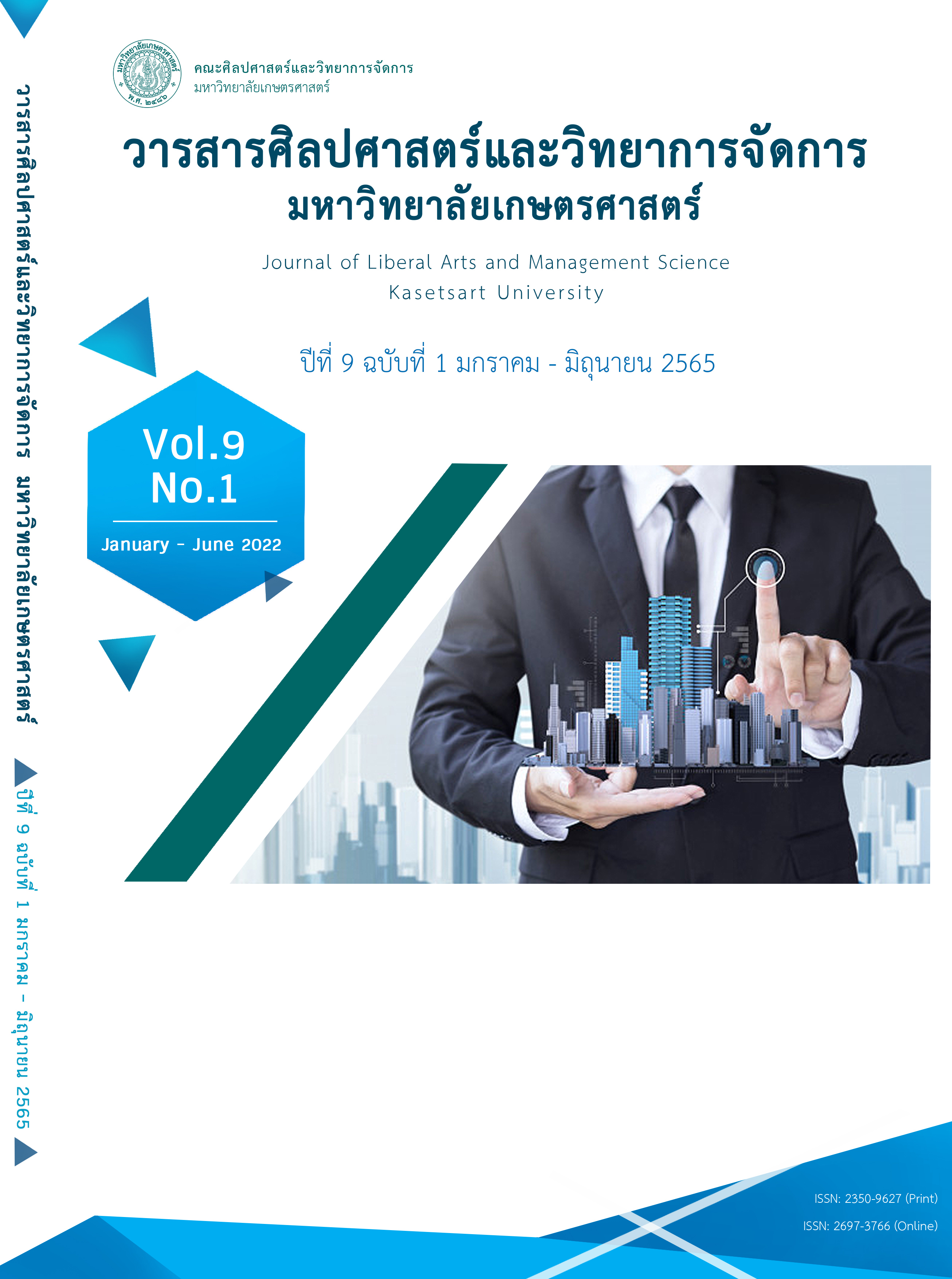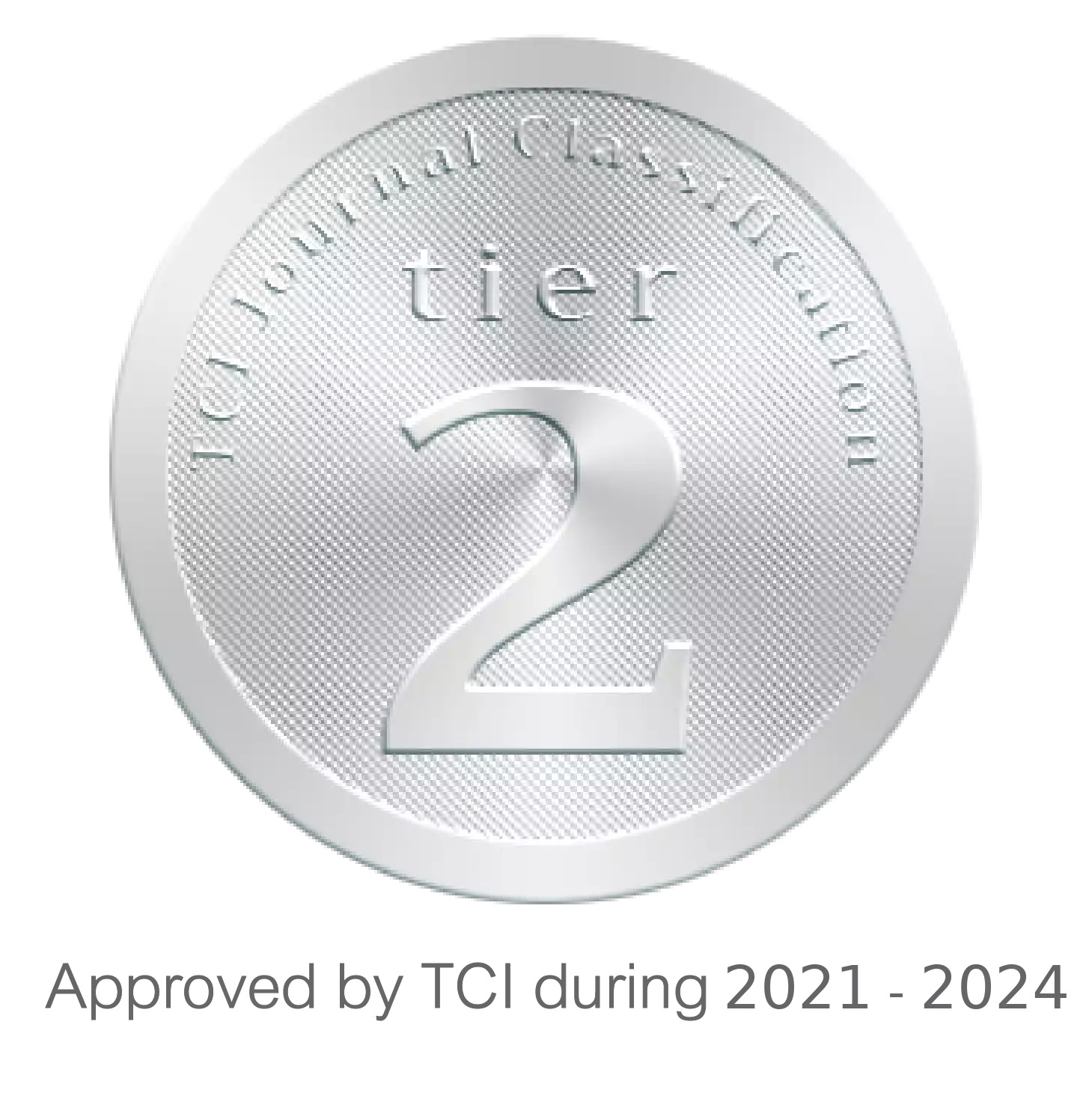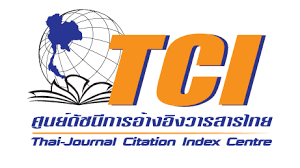EFFECTS OF MARKET ORIENTATION AND GREEN SUPPLY CHAIN MANAGEMENT ON A DEVOLOPMENT OF ENVIRONMENTAL SUSTAINABILITY OF NORTHEAST OF THAILAND’S HOTEL BUSINESS
Keywords:
Green Supplychain Management, Sustainable Environmental Development, Market OrientationAbstract
This study aimed to analyze on the composition and influence of marketing focus where green supply chain management had an influence toward the sustainable environmental development of the hotel business. Group of sample in this study was those 220 hotel businesses in northeastern part of Thailand. This research applied the inferential statistical analysis with structural equation modeling. The results of hypotheses testing found that the developed structural equation modeling had conformed to the empirical data at the same covariance and passed the standard criteria by statistic x2=43.209, df=41 (chi-square/df=1.05), p-value=0.377, CFI=0.991, GFI=0.966, RMSEA=0.016, and SRMR= 0.006. It can be explained that marketing focus had no direct influence toward sustainable environmental development with the magnitude of influence at 0.001 (p=0.997) Marketing focus had an indirect influence toward sustainable environmental development through green supply chain management at the statistical significance of 0.05 with the coefficient value that represented for the magnitude of indirect influence at 0.650. Marketing focus had direct influence toward green supply chain management at the statistical significance of 0.01with the coefficient value that represented for the magnitude of influence at 0.733. In addition, green supply chain management had an influence toward sustainable environmental development at the statistical significance of 0.01 and the coefficient value that represented for the magnitude of influence at 0.886. Therefore, the variables were associated in form of linkage and compliance in the very same direction statistically significant.
Downloads
References
Amol Singh and Ashish Trivedi. (2015). Sustainable green supply chain management: trends and current practices. Competitiveness Revies, 26(3), 265-288.
Baron, R. and Kenny, D. A. (1986). The moderator-mediator variable distinction in social psy-chological research: conceptual, strategic, and statistical considerations. Journal of Personality and Social Psychology, 51(6), 1173.
Basher V. (2010). Vendor selection and quota allocation by using fuzzy topics and linear programming. Master of Engineering in Production Engineering. University of Delhi: India.
Carter, C. R., & Carter, J. R. (1998). Interorganizational determinants of environmental purchasing: initial evidence from the consumer products industries. Decision Sciences, 29(3), 659-684.
Ciegis, R., & Zeleniute, R. (2008). Ekonomikos pletra darnaus vystymosi aspektu. Taikomoji ekonomika: sisteminiai tyrimai, 2(1), 35-52.
Dawes, J., Romaniuk, J., & Mansfield, A. (2009). Generalized pattern in competition among tourism destinations. International Journal of Culture, Tourism and Hospitality Research, 3(1), 33-53.
Edwards, J. R., & Lambert, L. S. (2007). Methods for integrating moderation and mediation: A general analytical framework using moderated pathanalysis. Psychological Methods, 12(1), 1–22.
Elkington, J. (1994). Towards the sustainable corporation. California Management Review, 90(100). Winter.
Fortes, J. (2009). Green supply chain management: A literature review. Otago Management Graduate Review, 7, 51-62.
Green Kenneth, W., Inman, R. Anthony, Sower Victor, E., Zelbst Pamela, J. (2019). Impact of JIT, TQM and green supply chain practices on environmental sustainability. Journal of Manufacturing Technology Management, 30(1), 26-47.
Hair, J., Black, W., Babin, B., Anderson, r.,and Tatham, R. (2010). Multivariate data analysis. (7th ed). New Jersey: Pearson Educational International.
Hu, L. T., and Bentler, P. M. (1999). Evaluating model fit. In R. H. Hoyle (Ed). Structural Thousand Oaks, CA: Sage. Equation modelling: Concepts, issues, and applications. 76-99.
Hunt. (2002). Doctoral seminars in marketing theory: For incorporating the history of marketing practice and thought. Journal of Historical Research in Marketing. ISSN: 1755-750X.
James R. Stock. (1998). Development and Implementation of Reverse Logistics Programs, Oak-Brook, Illionois, Councilof Logistics Management.
John T.Mentzer. (2007). A market orientation in supply chain management. Journal of the Academy of Marketing Science, 35(4), 507-522.
Jose Antonio, Rosa Madhubalan and Viswanathan. (2007). Market orientation and performance in low-income countries: The case of Zimbabwean retailers. Product and Market Development for Subsistence Marketplaces. 215-257.
Kaynaka, E., & Kara, A. (2004). Market orientation and organizational performance: A comparison of industrial versus consumer companies in mainland China using market orientation scale (MARKOR). Journal of Industrial Marketing Management, 33(8), 743-753.
Kelloway, E. Kevin. (1998). Using LISREL for structural equation modeling. New Jersey: Sage Publication.
Kline, R. B. (2005). Principles and practice of structural equation modeling. New York: Guilford Press.
Koh SCL, Demirbag M, Bayraktar E, Tatoglu E, Zaim S. (2007). The impact of supply chain management practices on performance of SMEs. Industrial Management & Data Systems, 107(1), 103-124.
LMI Government Consulting. (2005). Best practices in implementing green supply chain. supply chain world conference and exposition, April, North America.
Mohanty RP, Deshmukh SG. (2005). Supply chain management: theories and practices. Delhi: Biztantra Publication.
Morgan-Lopez, A., Castro, F., Chassin, L., & MacKinnon, D. (2003). A mediated moderation model of cigarette use among mexican american youth. Addictive Behaviors, 28, 583-589.
Ngai, J. C. H., & Ellis, P. (1998). Market orientation and business performance: some evidence from Hong Kong. International marketing review, 15(2), 119-139.
Ninlawan, C., Seksan, P., Tossapol, K., & Pilada, W. (2010, March). The implementation of green supply chain management practices in electronics industry. In World Congress on Engineering 2012. July 4-6, 2012. London, UK. (Vol. 2182, pp. 1563-1568). International Association of Engineers.
Nunta, Supang., Ooncharoen, Nantana., & Jadesadalug, Viroj. (2012). The effects of service innovation strategy on business performance of spa business in Thailand. International Journal of Business Research, 12(3), 35–55.
Petersen, E. & Plowman, G. E. (1999). Business organization and management. Illinois: Irwin.
Quayle M. (2003). A study of supply chain management practice in UK industrial SMEs. supply chain management. An International Journal, 8(1), 79-86.
Rahbar, E., & Rahbar, E. (2008). To buy green and non-green products: What are the factors influencing customer purchase behavior. MBA Thesis, University Sains Malaysia.
Rao, P. (2006). Greening production: a south-east asian experience. International Journal of Operations and Production Management, 24(3), 289-320.
Rovinelli, R. J., & Hambleton, R. K. (1977). On the use of content specialists in the assessment of criterion-referenced test item validity. Retrieved November 1, 2021, from https://eric.ed.gov/?id=ED121845
Robinot, E. & Giannelloni, J. (2010). Do hotels “Green” attributes contribute to customer satisfaction? Journal of Services Marketing, 24(2), 157-169.
Salam, M. A. (2008, September). An empirical investigation of the determinants of adoption of green procurement for successful green supply chain management. In 2008 4th IEEE International Conference on Management of Innovation and Technology (pp. 1038-1043). IEEE.
Santos, J. B., & Brito, L. A. L. (2014). Toward a subjective measurement model for firm performance. Industrial Marketing Management, 9, 95-117.
Schmitt, N. (1996). Uses and Abuses of Coefficient Alpha. Psychological Assessment, 8, 350-353.
Shoham, A., & Rose, G. M. (2001). Market orientation: A replication, cross-national comparison, and extension. Journal of Global Marketing, 14(4), 5-25.
Slater, S. F., & Narver, J. C. (1995). Market orientation, and the learning organization. Journal of Marketing, 59(3), 63-74.
Srivastava, S. K. (2007). Green supply‐chain management: a state‐of‐the‐art literature review. International journal of management reviews, 9(1), 53-80.
Subramanian, R., & Gopalakrishna, P. (2001). The market orientation-performance relationship in the context of a developing economy an empirical analysis. Journal of Business Research, 53(1), 1-13.
Tan KC. (2002). Supply chain management: practices, concerns, and performance issues. Journal of Supply Chain Management, 38(1), 42-53.
Tse, A.C. B., Sin, L. Y. M., Yau, O. H.M., Lee, J. S. Y., & Chow, R. (2003). Market orientation and business performance in a Chinese business environment. Journal of Business Research, 56, 227-239.
Wendy L. Tate. (2016). The impact of strategic organizational orientations on green supply chain management and firm performance. International Journal of Physical Distribution & Logistics Management, 46(3), 269-292.
Wood, V., Bhuian, S., & Kiecker, P. (2000). Market orientation and organizational performance in notfor-profit hospitals. Journal of Business Research, 48(3), 213-226.
Zhu & Sarkis, (2004). Relationships between operational practices and performance among early adopters of green supply chain management practices in Chinese manufacturing enterprises. Journal of Operations Management, 22(3), 265–289.
Zhu, Sarkis & Geng, (2005). Green supply chain management in China: pressures, practices and performance. International Journal of Operations and Production Management, 25, 449–468.









